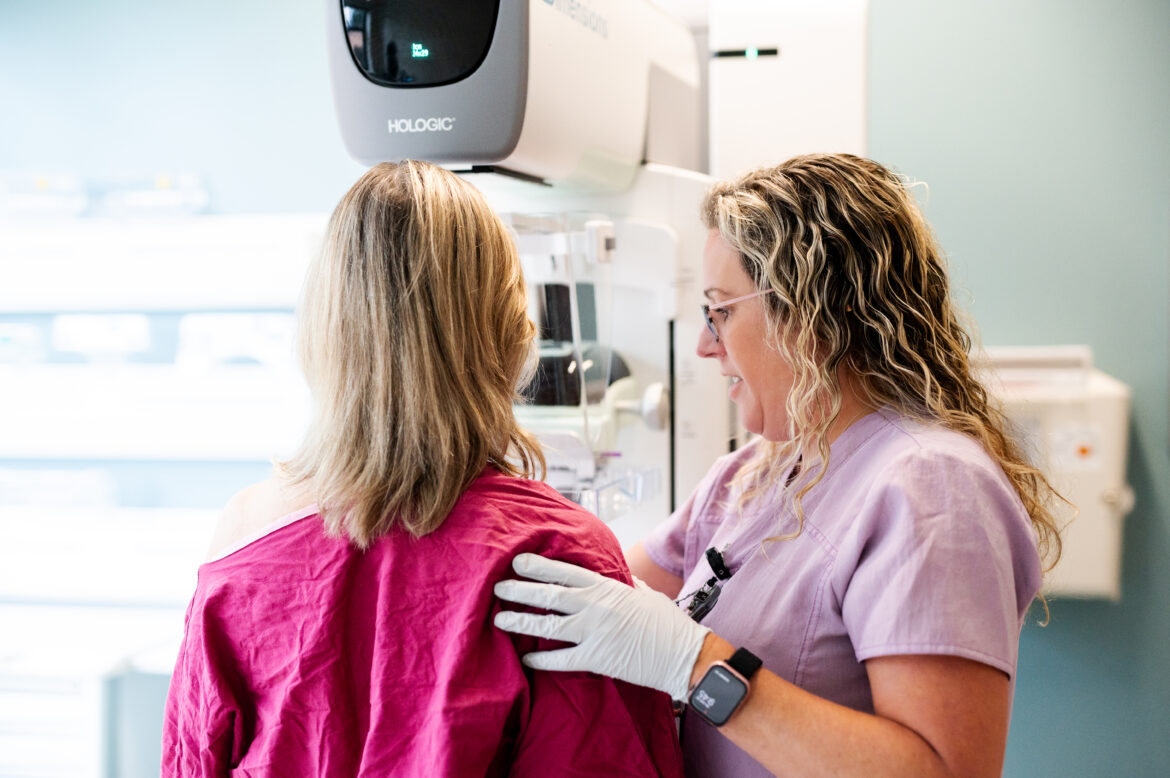Did your doctor say you have “dense breast tissue?” If you’re wondering what that means or are concerned about the implications, we’re here to help you out.
Dense breast tissue is not an issue in and of itself, but special considerations need to be taken to manage your breast health. At the UVA Breast Care Center, we understand that all breasts are not the same and provide imaging according to each woman’s needs.
How Do I Tell If I Have Dense Breast Tissue (and What Exactly Is It)?
Despite what you might think, the density of your breasts has nothing to do with their shape or size. In fact, you cannot determine whether or not you have dense tissue on your own without the aid of a mammogram. We recommend that you schedule yourself for regular mammograms as soon as you are eligible. At UVA, we encourage all women over the age of 40 to start getting annual mammograms.
Once you get your mammogram, your radiologist will read the scan and inform you if your breast tissue is dense. To get a sense of what the radiologist is looking at, follow this general rule: the dark areas on a mammogram are fatty tissue; the white areas are dense tissue.
But what actually is that white tissue? All breasts are made of fat and breast tissue. Generally speaking, breast tissue is a combination of fibrous tissue and the structures that make milk during pregnancy and lactation. Some women have more fat than breast tissue, while others have more breast tissue than fat.
When there is more breast tissue than fat, the breast is considered dense. When your radiologist reads your mammogram and sees predominantly white tissue, it is likely you have dense breast tissue. Your radiologists will classify your breast density into one of four categories.

Why Does Breast Density Matter?
Dense breast tissue is fairly common, but it does require more proactive and intensive care than less dense tissue. Don’t let that intimidate you, though. With the right knowledge, you can approach your breast care with confidence. Here are some important things you should know about dense breast tissue:
1. Traditional (i.e. 2D) mammography is not as effective at detecting breast cancer for women with dense breasts. Breast cancers generally show up white on a scan, and they can easily be hidden by the dense tissue.
2. Dense tissue does carry a higher risk of developing breast cancer. Statistics show that women with extremely dense tissue are 4 times more likely to be diagnosed with breast cancer than those with fatty breasts.
I Have Dense Breasts – What Should I Do?
The first thing you should do is keep getting your mammogram regularly. You should continue doing this, even if you don’t have dense breasts. Any other tests you have done should be in addition to (NOT in place of) your mammogram. That being said, you should be even more vigilant in your self breast exams if you have dense tissue. You should report lumps or other changes in your breasts to your doctor right away, even if you just had a traditional mammogram.
If you have dense breasts, your doctor may also recommend alternate forms of screening. So what are some of these other possible screening tests? Three available options are:

1. Automated Breast Ultrasound (ABUS)—The ABUS breast cancer screening was specifically developed to help doctors find cancers hidden in dense breast tissue. Because an automated breast ultrasound screening uses sound waves to create 3D images of the breast tissue, there is no radiation associated with this screening. To learn more about ABUS at UVA, click here.

2. Tomosynthesis—Tomosynthesis is a 3D mammogram, and has about an 80% higher dose of radiation than a regular mammogram. It is, however, associated with a lower false positive result than an ultrasound or regular mammogram. To learn more about the advantages of 3D Mammography, click here.

3. Breast MRI—A very accurate test for breast cancer, breast MRI is done by injecting contrast dye into your body and then doing an MRI of the breast. Breast MRI can be expensive and is a good option for people who need an accurate test, especially those with family history or test results showing atypical cells.

4. Contrast Enhanced Mammography (CEM)—Contrast-enhanced mammography (CEM) is a specific type of mammogram exam that uses medical imaging contrast to create a special picture of the breast tissue. With CEM, your radiologist will get a more detailed image telling them exactly where to look for potential issues in the breast. To learn more about how CEM can help doctors map breast cancer, click here.
Taking care of your health is of the utmost importance—and breast health is no different. If you have dense breasts, there are resources available to help you know what’s happening in your body and make the best decisions possible.
At the UVA Breast Care Center, we provide advanced breast imaging for women with dense breast to give doctors the highest probability of detecting breast cancer. Click here to learn more about the advanced screening tools offered at UVA.



